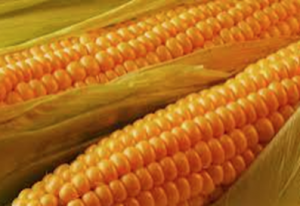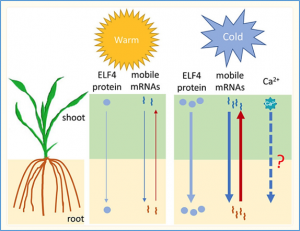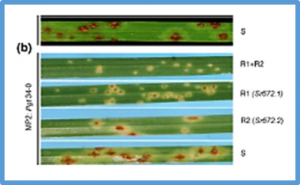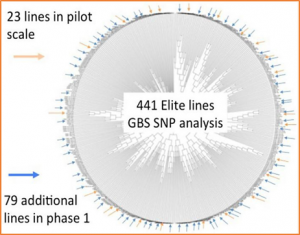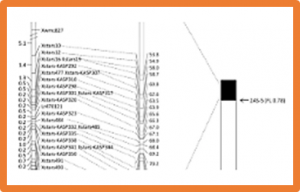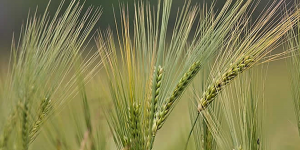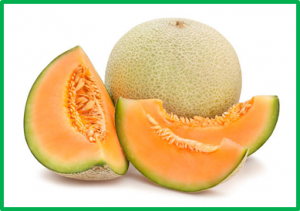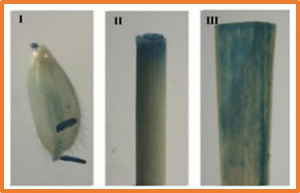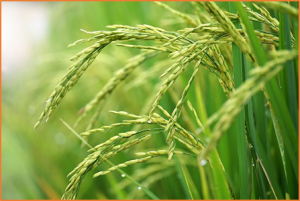A better understanding of the extent of convergent selection among crops could greatly improve breeding programs. We found that the quantitative trait locus KRN2 in maize and its rice ortholog, OsKRN2, experienced convergent selection. These orthologs encode WD40 proteins and interact with a gene of unknown function, DUF1644, to negatively regulate grain number in both crops. Knockout of KRN2 in maize or OsKRN2 in rice increased grain yield by ~10% and ~8%, respectively, with no apparent trade-offs in other agronomic traits.
Maize (Zea mays L.) is an annual grass that originated in tropical and subtropical regions of the New World. Maize is highly sensitive to cold stress during seed gemination and the seedling phase, which can lead to reductions in plant vigor and grain production. There are large differences in the morphological and physiological changes caused by cold stress among maize varieties. In general, cold tolerant varieties have a stronger ability to maintain such changes in traits related to seed germination, root phenotypes, and shoot photosynthesis
The Aegilops tauschii (wheat D-genome progenitor) accessions RL 5271 and CPI110672 were identified as resistant to multiple races (including the Ug99) of the wheat stem rust pathogen Puccinia graminis f. sp. tritici (Pgt). This study was conducted to identify the stem rust resistance (Sr) gene(s) in both accessions. Genetic analysis of the resistance in RL 5271 identified a single dominant allele (SrRL5271) controlling resistance,
The SoyaGen project was a collaborative endeavor involving Canadian soybean researchers and breeders from academia and the private sector as well as international collaborators. Its aims were to develop genomics-derived solutions to real-world challenges faced by breeders. Based on the needs expressed by the stakeholders, the research efforts were focused on maximizing realized yield through optimization of maturity and improved disease resistance.
Leaf rust, caused by Puccinia triticina, is the most common and widespread rust disease in wheat. Races of Puccinia triticina evolve rapidly in the southern Great Plains of the USA, and leaf rust resistance genes often lose effectiveness shortly after deployment in wheat production. PI 470121, a wheat breeding line developed by the University of Zagreb in Croatia, showed high resistance to Puccinia triticina races collected from Oklahoma, suggesting that PI 470121 could be a leaf rust resistance source for the southern Great Plains of the USA.
Various RNA viral diseases on sugarcane result in yield loss and decreased sugar content. Breeding new varieties with virus resistance is the main goal of the sugarcane breeding program. Both single-stranded and double-stranded RNA viruses generated a double-stranded RNA replicative form (RF) during the replication cycle progress. While double-stranded RNA-specific ribonuclease (PAC1) encoded by the Pac1 gene (from Schizosaccharomyces pombe)
The goal of any plant breeding program is to maximize genetic gain for traits of interest. In classical quantitative genetics, the genetic gain can be obtained from what is known as “Breeder’s equation”. In the past, only phenotypic data were used to compute the genetic gain. The advent of genomic prediction (GP) has opened the door to the utilization of dense markers for estimating genomic breeding values or GBV. The salient feature of GP is the possibility to carry out genomic selection with the assistance of the kinship matrix, hence improving the prediction accuracy and accelerating the breeding cycle.
Plant endogenous small RNAs (sRNAs) are involved in various plant developmental processes. In Arabidopsis, sRNAs combined with ARGONAUTE (AGO) proteins are incorporated into the RNA-induced silencing complex (RISC), which functions in RNA silencing or biogenesis of trans-acting siRNAs (ta-siRNAs). However, their roles in melon (Cucumis melo L.) are still unclear. Here, the melon shoot organization 1 (mso1) mutant was identified and shown to exhibit pleiotropic phenotypes in leaf morphology and plant architecture.
Rice (Oryza sativa L.) is one of the main food crops for human survival, and its yield is often restricted by abiotic stresses. Drought and soil salinity are among the most damaging abiotic stresses affecting today's agriculture. Given the importance of abscisic acid (ABA) in plant growth and abiotic stress responses, it is very important to identify new genes involved in ABA signal transduction. We screened a drought-inducing gene containing about 158 amino acid residues from the transcriptome library of rice exposed to drought treatment, and we found ABA-related cis-acting elements and multiple drought-stress-related cis-acting elements in its promoter sequence.
High salinity seriously affects crop growth and yield. Abscisic acid-, stress-, and ripening-induced (ASR) proteins play an important role in plant responses to multiple abiotic stresses. In this study, we identified a new salt-induced ASR gene in rice (OsASR6) and functionally characterized its role in mediating salt tolerance. Transcript levels of OsASR6 were upregulated under salinity stress, H2O2 and abscisic acid (ABA) treatments. Nuclear and cytoplasmic localization of the OsASR6 protein were confirmed. Meanwhile, a transactivation activity assay in yeast demonstrated no self-activation ability.


 Curently online :
Curently online :
 Total visitors :
Total visitors :
